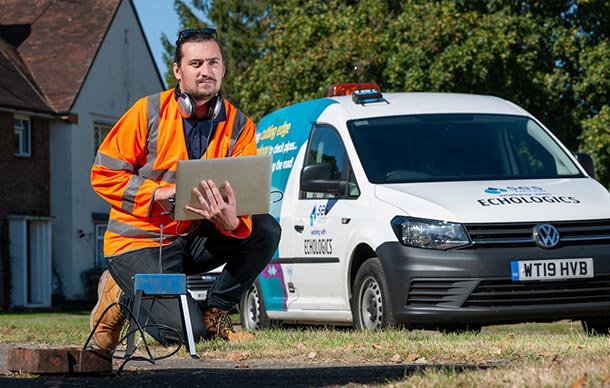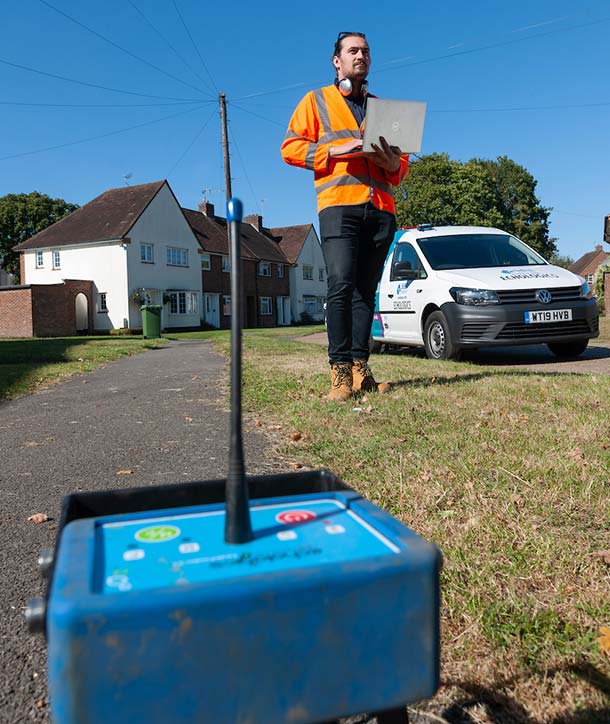ePulse® acoustic technology provides definitive non-invasive pipe condition assessment, improving & saving costs on pipe replacement programmes.
Date:
Publication:

Gathering pipe condition data can be expensive and disruptive and the old modelling of probabilities based on age, materials, installation and local knowledge, do not provide an accurate picture because pipes deteriorate in very different ways. Water pressure, the frequency of pressure transients, surrounding soil conditions, the layout of the network and local patterns of water usage, are all factors in the speed of pipe degradation.
Today more utilities are turning to acoustic technology as it is non-invasive and accurate in assessing a pipe’s condition and simultaneously detecting leaks. It analyses information about the pipe material, the time frame in which it was installed, the diameter of the pipe and the original wall thickness to estimate the condition and the remaining service life of the pipe. This real data allows for a more targeted replacement of pipes that are genuinely at the end of their life, and also provides insight of the overall network that can help with extending the life of assets.
Echologics, a Mueller brand developed ePulse®, a technology to determine the condition of close to 200 km of SES Water’s ageing metallic mains without disrupting any service to customers. SES Water serves 300,000 properties and businesses, so gathering the data without impacting service is extremely valuable. This window into the condition of SES assets will assist them in replacing mains that have reached end of life, and will increase SES Water’s efficiency and ability to deliver OFWAT’s regulatory challenges around resilience and reduced losses, in a sustainable and efficient way.
Joe Finn, Echologics Sales Manager for the United Kingdom & Ireland, says, “SES Water is trailblazing in proactive asset management to ensure they make informed decisions about where to focus resources and spending to improve their water distribution network”.
Many water utilities are taking a proof-of-concept trial approach and selecting a few District Metered Areas (DMA) or identifying areas of greatest concern for trial that typically takes a matter of weeks to implement and the results are close to immediate. This approach helps water utilities to develop a business case for a wider-scale condition assessment programme, as it shows real cost savings when it comes to decision making for repair. Invariably the data will show that some planned pipe replacement still has many more good years, or that a newer pipe, is degrading much faster than expected which typically leads to unravelling the root cause for this so that it can be fixed to extend the remaining years of operation. A bonus of the ePulse technology, is that it will also identify leaks in the test zone which has enabled customers to repair pipes before they cause further damage and water loss. ePulse has uncovered on average one leak for every 3 km surveyed during the project so far. Repairing these previously unidentified leaks is helping SES Water to provide a better service to their customers and reach their goal of a 15% leakage reduction over the next 5 years.

Knowing the actual condition of unseen assets, as in below ground pipes, improves a water utilities’ ability to maintain a healthy water distribution system by addressing concerns before they become an issue and prioritise and plan the replacement of aging infrastructure.
Daniel Woodworth of SES Water, says, “We maintain a fundamental belief that correctly targeted mains renewal is the only truly sustainable way to ensure that our network does not deteriorate over time, and we favour tackling the issue of ageing mains today, rather than leaving it for future generations.”
Click here to read the article in Water Industry Journal